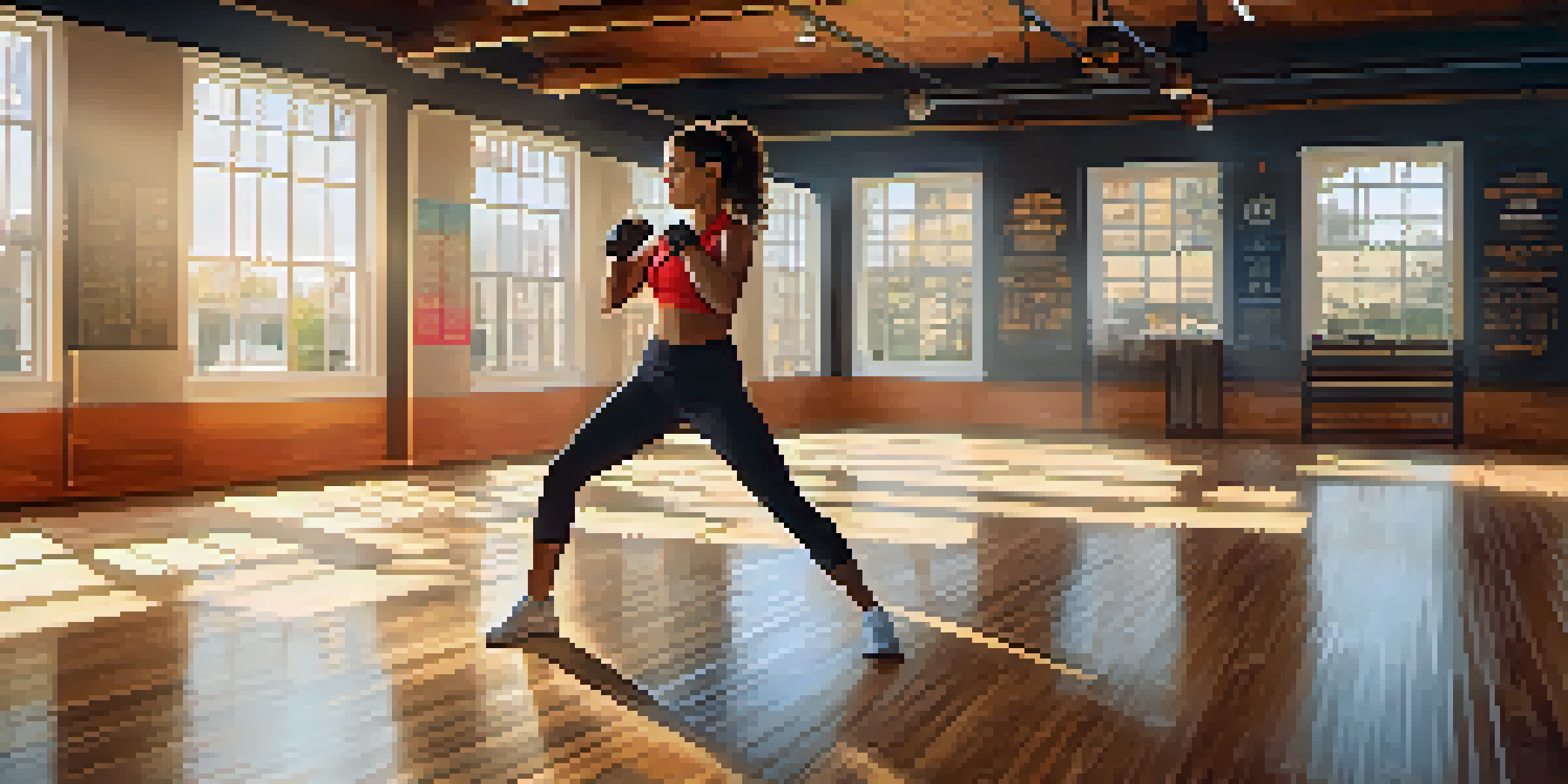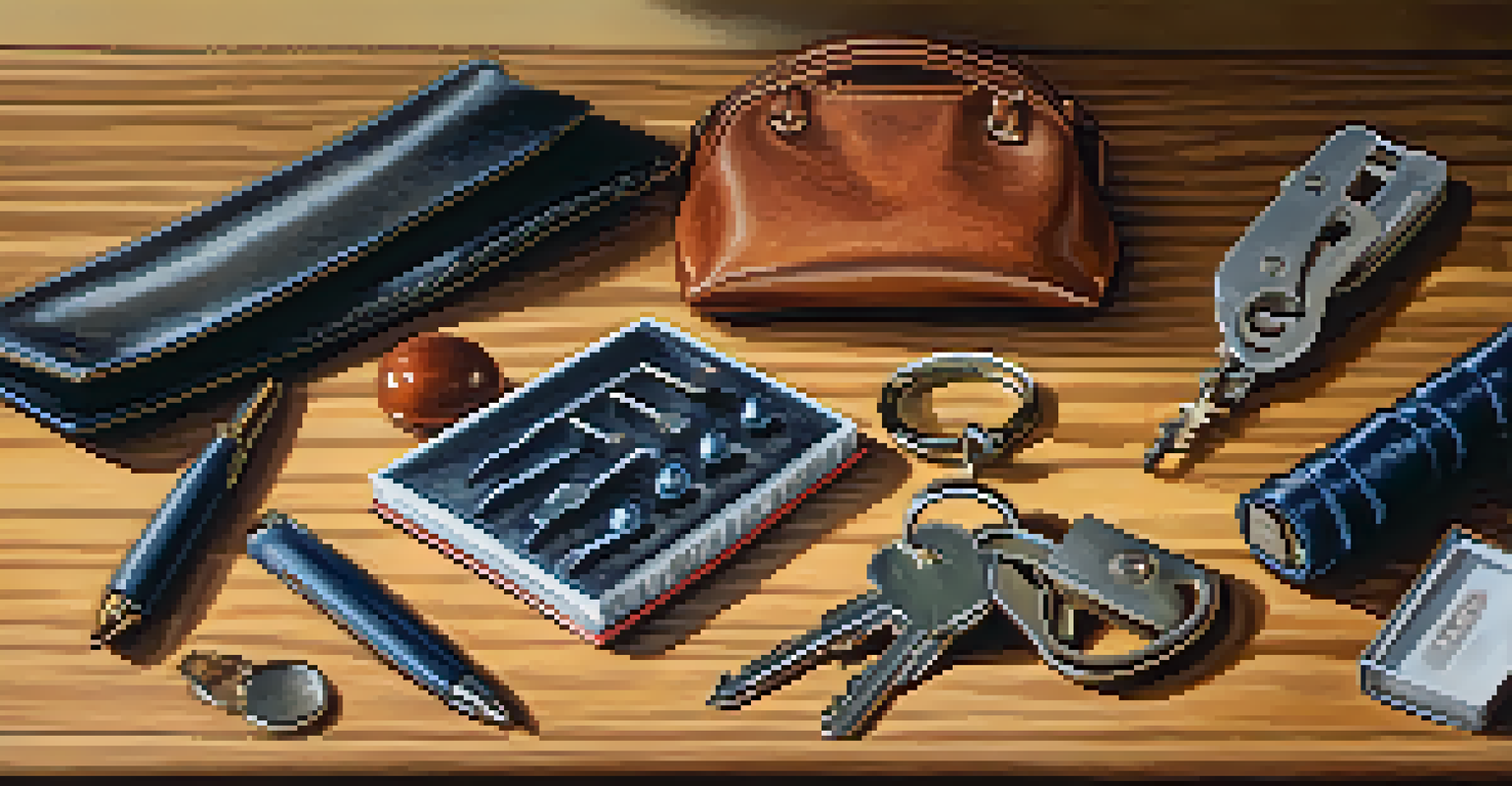Self-Defense Moves Every Woman Should Master

The Importance of Self-Defense for Women
Self-defense is not just about physical strength; it's about empowerment. Every woman should feel confident in her ability to protect herself in various situations. Understanding self-defense can provide peace of mind, allowing you to navigate the world with a greater sense of security.
The best defense is a good offense.
In today's society, awareness and preparedness are crucial. Unfortunately, the reality is that women often face threats, and knowing how to defend oneself can be a critical skill. This is not about promoting fear, but rather fostering a sense of agency and independence.
Learning self-defense can also enhance your physical fitness and mental resilience. It’s an opportunity to engage in a form of exercise that builds strength while also equipping you with practical skills that could one day make a difference.
Situational Awareness: The First Line of Defense
Before any physical moves, situational awareness is key. Being aware of your surroundings can help you identify potential threats before they escalate. This means paying attention to people around you and noticing anything that feels out of place.

For instance, if you find yourself in a dimly lit parking lot, stay alert and keep your phone handy. Trust your instincts; if something feels off, it probably is. This proactive approach can often deter a potential attacker before any confrontation occurs.
Self-Defense Empowers Women
Learning self-defense boosts confidence and equips women with essential skills to navigate potential threats.
By honing your situational awareness, you’re not just preparing for physical self-defense but also training your mind to remain calm and focused. This mental preparedness can make all the difference in a critical moment.
Basic Stances: Preparing for Action
Understanding basic stances is fundamental in self-defense. A strong stance not only helps you maintain balance but also prepares you to react quickly. One common stance is the 'guard position,' where you keep your hands up and elbows in, ready to defend.
Self-defense is not just a skill; it’s a mindset.
Practicing these stances can make them feel instinctive. Imagine being in a boxing ring; your stance can determine how effectively you can react to an opponent. The more comfortable you become with these positions, the more confident you'll feel when the need arises.
Additionally, adopting a stable stance can help you project confidence, which can sometimes discourage potential threats. Remember, showing that you are aware and ready can serve as a deterrent in itself.
Effective Strikes: Targeting Vulnerable Areas
When it comes to self-defense, knowing where to strike can turn the tide in your favor. Targeting vulnerable areas like the eyes, nose, throat, and groin can cause enough distraction or pain to give you a chance to escape. Understanding this can help you think clearly in a stressful situation.
For example, a swift strike to the nose can disorient an attacker, allowing you to make your escape. Practicing these moves, even in a safe environment, can help you feel prepared and more in control. The goal is to create an opportunity to get away, not to engage in a prolonged fight.
Situational Awareness is Key
Being aware of your surroundings can help you identify potential dangers before they escalate into confrontations.
Remember, the objective is not to prove your strength but to create distance and safely exit the situation. Each strike should be executed with the intent to maximize your chance of escape.
Escape Techniques: Getting Out of Grips
If you find yourself in a situation where someone has grabbed you, knowing how to escape is crucial. Techniques like wrist releases or using your body weight can be effective. For instance, if someone grabs your wrist, rotating your hand towards them can break their grip.
Additionally, using your body weight against your opponent can help you gain leverage. If someone is pulling you, instead of resisting, you can drop your weight and shift in a direction away from them. This unexpected movement can catch them off guard and create an opportunity for you to break free.
Practicing these escape techniques with a partner can help build muscle memory, making it easier to react instinctively in real-life situations. The more you practice, the more confident you will feel in your ability to escape.
Using Everyday Objects as Self-Defense Tools
You don't always need specialized training or weapons to defend yourself—everyday objects can be effective tools. Items like keys, a pen, or even a handbag can be used creatively in a self-defense situation. For example, holding your keys between your fingers can create a makeshift knuckle duster.
Think of your handbag as a defensive shield; swinging it can create distance and even serve as a distraction. The key is to be resourceful and quick-thinking in unexpected situations. Familiarizing yourself with potential tools in your environment can help you feel more prepared.
Mental Preparedness Matters
Preparing mentally through visualization and practice enhances your ability to respond effectively in threatening situations.
Being aware of your surroundings and the objects within them can turn an ordinary situation into an opportunity for self-defense. This mindset encourages you to think on your feet and react effectively, no matter what you have at hand.
Mental Preparedness: The Psychological Aspect of Defense
Self-defense is as much a mental game as it is a physical one. Preparing yourself mentally can significantly influence your response in a threatening situation. Visualizing scenarios and your reactions can help instill a sense of calmness and control when faced with real threats.
Consider practicing breathing techniques or affirmations to boost your confidence. Reminding yourself of your capability and resilience can change your mindset from fear to empowerment. Mental preparedness can often be the first step in ensuring your safety.

Moreover, engaging in regular self-defense training can reinforce this mental strength. The more you practice, the more instinctive your responses will become, allowing you to react quickly and effectively in real-life situations.